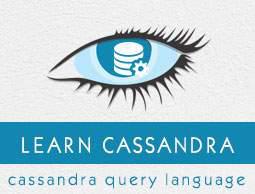Cassandra - Truncate Table
Truncating a Table
You can truncate a table using the TRUNCATE command. When you truncate a table, all the rows of the table are deleted permanently. Given below is the syntax of this command.
Syntax
TRUNCATE <tablename>
Example
Let us assume there is a table called student with the following data.
| s_id |
s_name |
s_branch |
s_aggregate |
| 1 |
ram |
IT |
70 |
| 2 |
rahman |
EEE |
75 |
| 3 |
robbin |
Mech |
72 |
When you execute the select statement to get the table student, it will give you the following output.
cqlsh:tp> select * from student;
s_id | s_aggregate | s_branch | s_name
------+-------------+----------+--------
1 | 70 | IT | ram
2 | 75 | EEE | rahman
3 | 72 | MECH | robbin
(3 rows)
Now truncate the table using the TRUNCATE command.
cqlsh:tp> TRUNCATE student;
Verification
Verify whether the table is truncated by executing the select statement. Given below is the output of the select statement on the student table after truncating.
cqlsh:tp> select * from student;
s_id | s_aggregate | s_branch | s_name
------+-------------+----------+--------
(0 rows)
Truncating a Table using Java API
You can truncate a table using the execute() method of Session class. Follow the steps given below to truncate a table.
Step1: Create a Cluster Object
First of all, create an instance of Cluster.builder class of com.datastax.driver.core package as shown below.
//Creating Cluster.Builder object
Cluster.Builder builder1 = Cluster.builder();
Add a contact point (IP address of the node) using the addContactPoint() method of Cluster.Builder object. This method returns Cluster.Builder.
//Adding contact point to the Cluster.Builder object
Cluster.Builder builder2 = build.addContactPoint( "127.0.0.1" );
Using the new builder object, create a cluster object. To do so, you have a method called build() in the Cluster.Builder class. The following code shows how to create a cluster object.
//Building a cluster
Cluster cluster = builder.build();
You can build a cluster object using a single line of code as shown below.
Cluster cluster = Cluster.builder().addContactPoint("127.0.0.1").build();
Step 2: Creating a Session Object
Create an instance of Session object using the connect() method of Cluster class as shown below.
Session session = cluster.connect( );
This method creates a new session and initializes it. If you already have a keyspace, then you can set it to the existing one by passing the KeySpace name in string format to this method as shown below.
Session session = cluster.connect(“ Your keyspace name ” );
Session session = cluster.connect(“ tp” );
Here we are using the keyspace named tp. Therefore, create the session object as shown below.
Step 3: Execute Query
You can execute CQL queries using the execute() method of Session class. Pass the query either in string format or as a Statement class object to the execute() method. Whatever you pass to this method in string format will be executed on the cqlsh.
In the following example, we are truncating a table named emp. You have to store the query in a string variable and pass it to the execute() method as shown below.
//Query
String query = "TRUNCATE emp;;”;
session.execute(query);
Given below is the complete program to truncate a table in Cassandra using Java API.
import com.datastax.driver.core.Cluster;
import com.datastax.driver.core.Session;
public class Truncate_Table {
public static void main(String args[]){
//Query
String query = "Truncate student;";
//Creating Cluster object
Cluster cluster = Cluster.builder().addContactPoint("127.0.0.1").build();
//Creating Session object
Session session = cluster.connect("tp");
//Executing the query
session.execute(query);
System.out.println("Table truncated");
}
}
Save the above program with the class name followed by .java, browse to the location where it is saved. Compile and execute the program as shown below.
$javac Truncate_Table.java
$java Truncate_Table
Under normal conditions, it should produce the following output −
Table truncated


